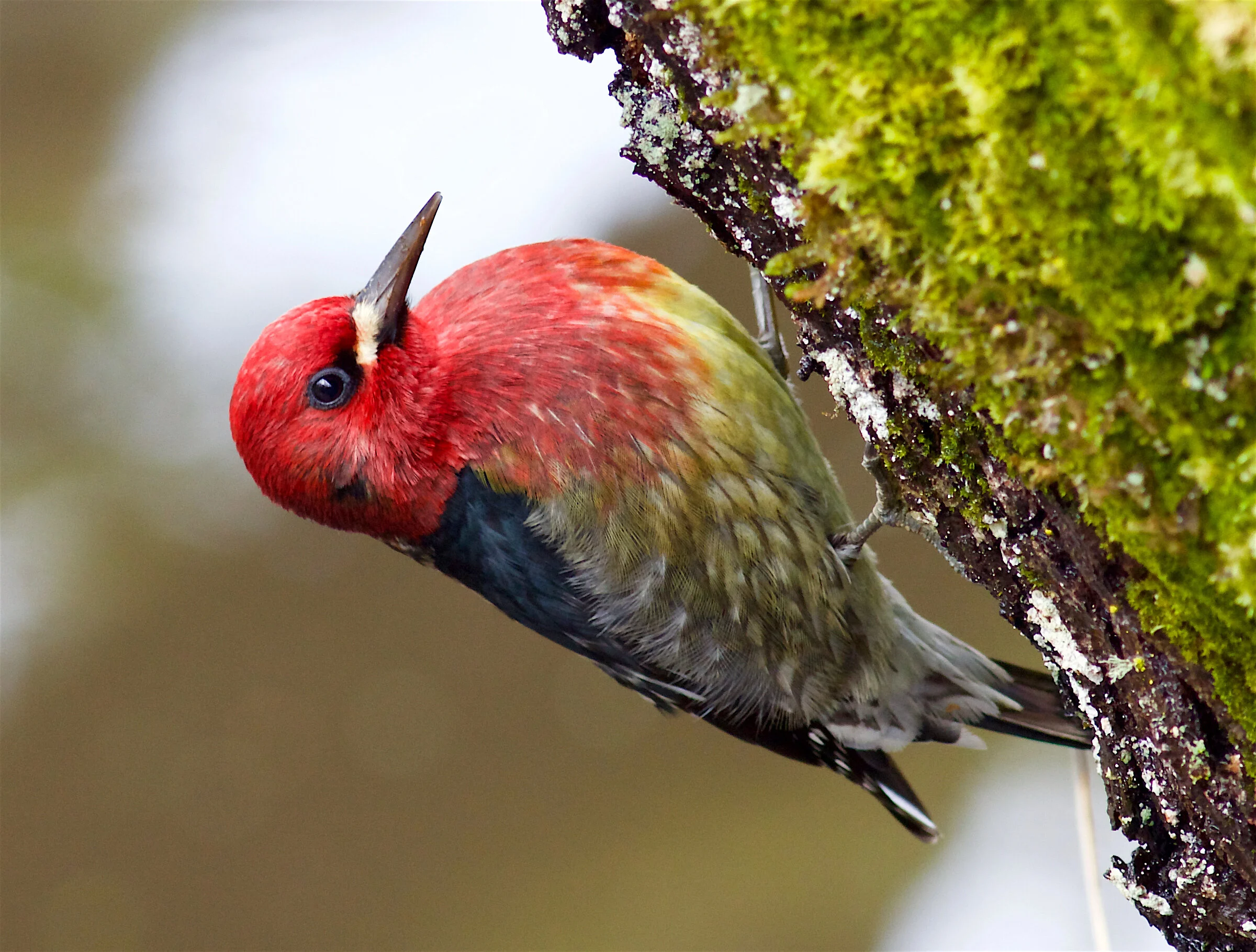Bird of the Week: Red-Breasted Sapsucker
Photo Courtesy of the National Audubon Society
Species: Red-breasted Sapsucker (Sphyrapicus ruber)
Family: Picidae (Woodpeckers)
Star sign: Gemini
Rating: 12/10
Ideal Date: Going on a triple date alongside its two siblings.
With a fairly limited range along the West Coast of the United States and Canada, the Red-Breasted Sapsucker isn’t a woodpecker that you’re going to see just anywhere. Unlike most other woodpeckers, which feed on insects they find living on the trunks of trees, this red friend feeds on tree sap. In order to get its dinner it creates sap wells, shallow holes it drills through the outer bark of trees which allow it to access the sweet, sticky treat within. Not only does this behavior feed the sapsucker, but it also attracts friends—specifically Rufous Hummingbirds — which nest near sap wells and sometimes follow around Red-Breasted Sapsuckers as they go about their days! We love to see friendship and solidarity amongst feathered friends.
The Red-breasted Sapsucker is also a bird of somewhat confusing taxonomy. The fine fellow is part of the genus Sphyrapicu, or sapsuckers, a collection of four North American woodpeckers who all feed primarily on tree sap. But up until 1983, three of those four birds, including our friend the Red-breasted Sapsucker, were considered the same species! They and the Red-naped Sapsucker were both believed to be the same species as the Yellow-bellied Sapsucker. But after studies showed that they were three distinct (albeit closely related) species, scientists started treating them as such. And if that’s not complicated enough, the Red-breasted Sapsucker has two subspecies as well! One resides in the northern part of its range (“ruber”), and the other resides in the southern part (daggetti); the daggetti subspecies has white lines on its face, is less red, and is slightly smaller than the ruber subspecies.
Here at Reed, we have the ruber subspecies, although we’re close enough to the range of the daggetti subspecies that seeing one on campus isn’t inconceivable. To identify this swell sapsucker, look for a robin-sized bird with a crimson red head and chest, black body with white speckles, and white stomach with black speckles. Their beaks are a skinny but solid triangular shape, and they can often be seen on the trunks of trees, tapping away as woodpeckers are so wont to do. Keep an eye out for this red and excellent friend, and you might just catch a glimpse!

